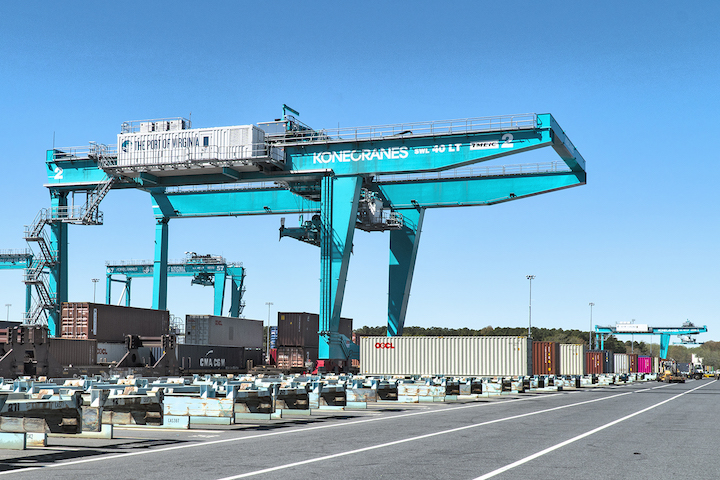The Port of Virginia has ordered three Konecranes Rail-Mounted Gantry (RMG) cranes for its Norfolk International Terminals (NIT) facility. This follows on the successful deployment of four Konecranes RMGs of a similar design at the Virginia International Gateway (VIG). The cranes will be delivered by the end of 2023.
The Port of Virginia is a longstanding Konecranes customer, with a fleet of 116 Konecranes Automated RMG (ARMG) cranes working at its Norfolk International (NIT) and Virginia International (VIG) container terminals. The new cranes will work in a very similar way to the current Konecranes RMGs, loading and unloading trains and terminal trucks to serve the port’s customers in the Midwest and Ohio Valley.

Rich Ceci, Sr Vice President Technology and Projects at VIG, said: “The Port of Virginia has grown and flourished with Konecranes’ container handling technology. We are always finding new ways to improve our container handling operations, using everything at our disposal including the possibilities that Konecranes technology gives us.”
In January 2018, construction began on a $452 million terminal optimization project at NIT that increased the terminal’s capacity by 46 percent within the same footprint. NIT has direct, on-dock rail access to Norfolk Southern’s Heartland Corridor, allowing second-day double-stack service to inland markets. NIT also gives access to CSX Intermodal. Expanded rail services are critical to the port’s customers in the Midwest and Ohio Valley.
This latest order of equipment from Konecranes continues the port’s investment in its terminals. The RMGs are part of an $80 million expansion of the Central Rail Yard at NIT, which when complete will be able to handle more than 600,000 lifts annually.
A strong focus on customers and commitment to business growth and continuous improvement make Konecranes a lifting industry leader. This is underpinned by investments in digitalization and technology, plus our work to make material flows more efficient with solutions that decarbonize the economy and advance circularity and safety.









